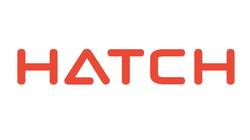Planning completed for massive N3 capacity upgrades
| Planning completed for massive N3 capacity upgrades | 16.72 KB | Download | |
| Hatch Goba undertook the planning, preliminary design from Paradise Valley, west of Durban, to Cedara, north of Pietermaritzburg | 2.63 MB | Download | |
| Hatch Goba's extensive road infrastructure experience includes the Umgeni Interchange upgrade project for SANRAL. | 2.39 MB | Download | |
| Hatch Gobas Ian Jackson, Freek Serton and John McCall with their commendation for the Umgeni Road Interchange project at the CES | 1.63 MB | Download |
Hatch Goba, as lead consultant, in consultation with the South African National Roads Agency (SANRAL), undertook the planning and preliminary design of the section from Paradise Valley just west of Durban to Cedara, north of Pietermaritzburg, in conjunction with Royal Haskoning DHV as joint venture (JV) partner. Acer (Africa) was the lead environmental practitioner, while Stratecon was the economic assessment specialist.
The JV’s scope of work focused initially on the compilation of a preliminary design report that took into account all existing data, from traffic analysis to Lidar surveys, bridge scans and materials data. The upgrade proposals contained in this report then had to be refined further by means of micro-simulation modelling.
“The big driver for completing the preliminary design was to identify where SANRAL needed to acquire more land,” Freek Serton, director: roads at Hatch Goba explains. Where possible, development is to take place towards the inside of the median, but it does exceed the current road reserve in certain places. “We have identified all of these areas, and the land acquisition process is underway at the moment.
“We were also required to evaluate the existing pavement and, together with the outcomes of traffic analysis, indicate a pavement strategy to sustain current and future traffic loadings,” Serton notes. The required capacity upgrades to the N3 main line had to provide a Level of Service D in 2047.
“An important part of our brief was not just to provide capacity, but also to look at safety upgrades in terms of the road alignment,” Serton emphasises. This entailed evaluating the existing alignments, both horizontally and vertically, and then proposing upgrades to mitigate any unsafe conditions.
The current planning represents “the ultimate development of the N3” and is the result of a long process. “Our original appointment was for an upgrade from four to six lanes but the traffic analysis showed that, even then, sections of the road would reach capacity pretty soon, around 2020 to 2025, at which point more lanes would again need to be added.”
SANRAL then revised the project’s scope of work to consider a 30-year design period with implementation estimated to commence in 2017. This planning was done in consultation with other stakeholders as part of the SIP2 programme and, in particular, Transnet’s Freight Demand Model. In order to have sufficient capacity up until and including 2047, the road would need to be upgraded to an eight-lane facility, with four lanes in each direction.
“Climbing and crawler lanes are also required, so in certain places it even becomes ten lanes,” Serton highlights. It is recognised that an authority cannot build itself out of capacity and while the plan is for an eight-lane freeway (ten lanes for steep areas), SANRAL’s current network already has such lanes in other high-traffic areas.
The proposed solution is a massive upgrade of the N3 between the Candella Road Overpass, just east of the EB Cloete Interchange at Durban, and Cedara, just north of Pietermaritzburg. Most of the construction work is estimated to begin in 2017.
One of the key challenges facing SANRAL with the upgrade is the high-capital outlay required. The construction phase is unfunded at this stage, but is being discussed at a national level through the Presidential Infrastructure Coordinating Commission (PICC), which coordinates all the government’s infrastructure projects.
The total construction works (in 2014 prices, including design and supervision fees) for the 2017 portion of the project equates to R17.9 billion, while the 2027 portion will cost R4 billion. SANRAL has broken the project down into ten packages for the detail design and construction stages. “The tender process for the appointment of consulting engineers for these stages is underway. Some have been awarded, while a couple still have to be awarded,” Serton confirms.
Serton attributes the success of the planning process to date to the close working relationship between all the professional participants in the JV, and the interaction with SANRAL as the main client. “This is a flagship project for all involved. It is a testament to both the expertise and experience of all the JV members and SANRAL,” he concludes.
Ends
Notes to the editor
To download hi-res images for this release, please visit http://media.ngage.co.za and click the Hatch Goba link to view the company’s press office in the NGAGE Media Zone.
About Hatch Goba
Hatch Goba supplies process and business consulting, information technology, engineering, procurement and project and construction management and operational services to the mining, metallurgical, energy and infrastructure industries.
Media Contact
Gerhard Hope
NGAGE Public Relations
Phone: (011) 867 7763
Fax: 086 512 3352
Cell: 078 824 8723
Email: gerhard [at] ngage [dot] co [dot] za
Web: www.ngage.co.za
Browse the NGAGE Media Zone for more client press releases and photographs at http://media.ngage.co.za

